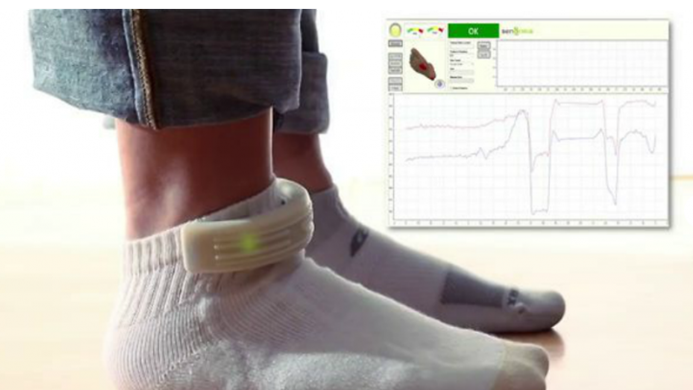.it th, .it td { border: 1px solid #aaa; padding: 5px; }

We are finally registering Edison’s statement from around 1880 that electricity should be made where it is needed. Smart fabrics will be successful in this. Whereas Google Glass, the impending Apple iWatch and the like employ familiar rigid electronics, making weavable e-fibers calls for completely new fiber, coating and other disruptive technology.
E-textiles and other smart fabrics clearly have a role to play as new technologies quickly become incorporated in many products across many markets.
Megatrend antidotes
The megatrends of “everything on the move” and “the demographic time bomb” collide to give us a product that provides diagnosis and instructed treatment by skin patch. For example, an undetectable few volts from a printed battery in a skin patch makes your skin up to 32 times more porous by “iontophoresis,” permitting a cosmetic or drug to be applied by a simple and reliable means.
With an aging population, typically, worldwide, reliable drug delivery systems are particularly meaningful. For example, after peaking seven years ago, at 128 million, Japan’s population has been falling and is on a path to decline by about a million people a year. By 2060, the government estimates, there will be just 87 million people in Japan; nearly half of them will be over 65. Italy and Russia have a similar problem. Wearable electronics could help to keep these large numbers of elderly people healthy.
| Issues | Example of improved solutions coming to market |
|---|---|
| Diabetes epidemic worldwide | Non-intrusive wearable monitoring of blood glucose. Worn artificial pancreas. |
| Obesity epidemic in USA and UK | Strongly linked to diabetes. Wearable fitness and exercise monitors. |
| Demographic time bomb – the greying of the population, most immediately in Russia, Japan, Italy. | Wearable electronics for self-diagnosis and treatment, providing mobility throughout life. |
| Making the blind see, the deaf hear and sign language users speak. Helping dementia patients communicate. | Smart contact lenses, patches, brainwave sensors worn on the head. |
| Helping people with physical disabilities to move independently | Electrically driven exoskeletons and prosthetics |
Animals then humans
Technologies practical for animal care also have human application; what is happening on a horse today may come to you later. For example, behaviour control already exists in the form of a pendant on an elderly person who may become disoriented, so that a caregiver can quickly respond if the wearer is in danger.
Alcohol detection
The recent fitting of an American alcohol-detecting band to a person with alcohol-related convictions in the U.K. is a reminder of how the use of wearable electronics for behaviour monitoring and therapy is proceeding apace. In a first for the U.K., the authorities fixed a SCRAM alcohol-detecting leg band to a high-risk offender. The principle is the same as leg bands fitted to individuals with anti-social behaviors, which will alert police if they go beyond an established radius from their home. This would be a breach of the restraining order, which would warrant sending the individual to a correction facility. In the case of alcohol, a person who may behave dangerously when intoxicated may also be incarcerated.
A round up of fabric opportunities
In this vast subject, the medical, healthcare, fitness and wellness applications are particularly worth watching as they will be the last to be commoditized and, often being a matter of life and death, they will be less price sensitive and subject to novelty peaks in demand. Here you can harness disposable electronics, stretchable electronics, self-healing polymers, edible electronics and invisible electronics that are transparent or can bend light with metamaterials. Many disciplines overlap in this firmament.
Large woven patches already deliver massage or heat therapy and remind you when to correct your posture. For small patches, imagine Band Aid materials made stronger and suitable for overprinting with electronic circuits.
Overall, there is a need to get costs down, but in some cases better reliability, wearability and longer product life will command premium pricing. A good starting point if you have an interest in developing high-quality products is to approach a university research facility with similar interests.
 TEXTILES.ORG
TEXTILES.ORG


